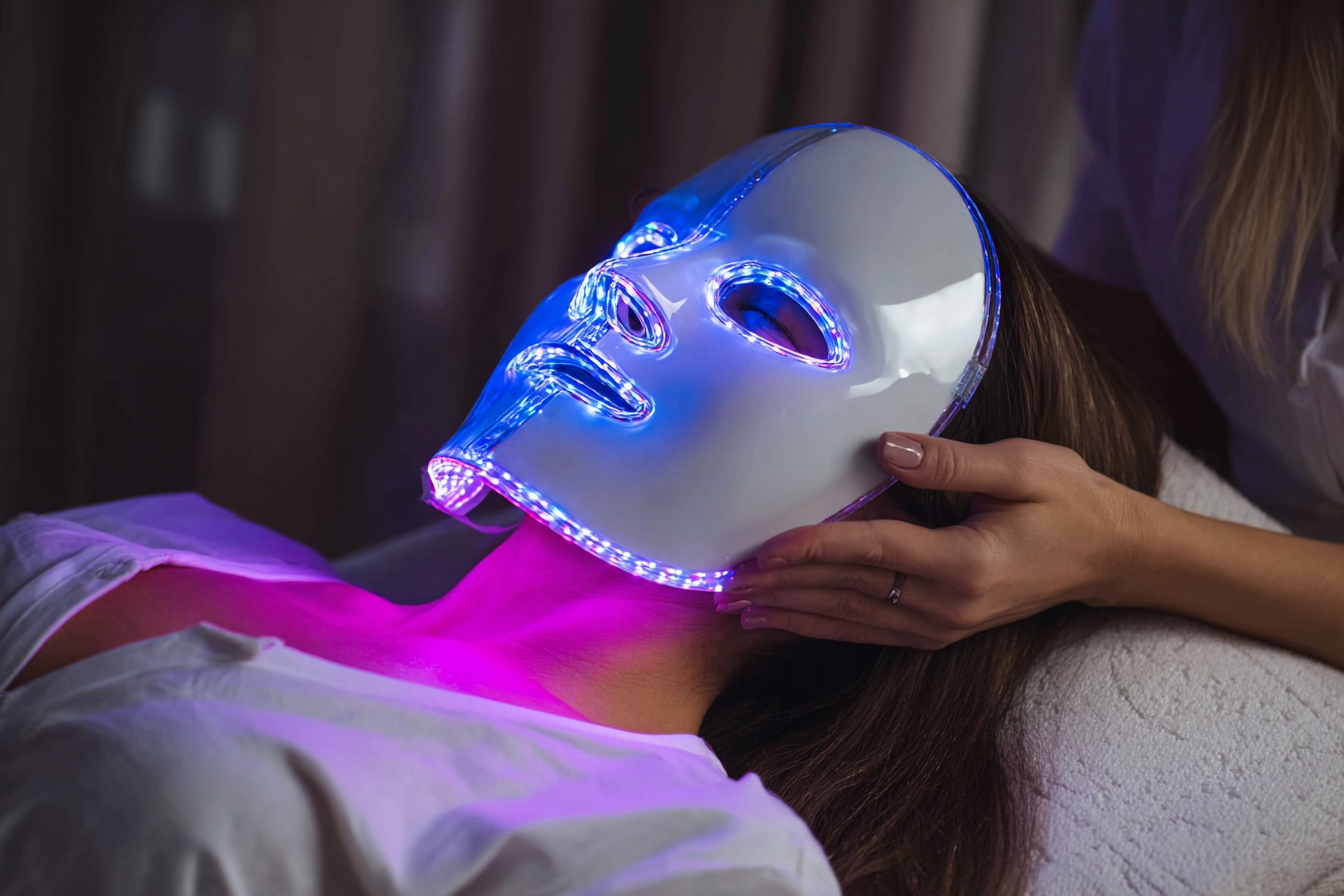The Unsung Skincare Ingredient that Went From Wound Healing to Barrier Repair in Skincare
Chitosan has spent decades in the quiet end of healthcare, tucked into dressings and gels in hospital wound wards. Now it is edging into beauty hall territory. The ingredient crossed over into mainstream beauty headlines in 2024 when Dyson unveiled its first Chitosan styling range, powered by chitosan derived from oyster mushrooms and engineered with its Triodetic technology for flexible, long lasting hold in hair styling products. For many consumers, that launch was the first time they had seen the word on shelf. For formulators and clinicians, it was a reminder that one of medicine’s most versatile wound polymers is finally being taken seriously for everyday barrier care.
What is Chitosan?
Chitosan is a cationic biopolymer created by deacetylating chitin, historically sourced from crustacean shells but now also produced from fungi and other marine sources. Most industrial chitosan still originates from shrimp and crab processing waste, although fungal and insect derived grades are gaining interest as demand, sustainability requirements and allergen concerns grow.
In medical devices, chitosan has a long evidence base in wound healing. It adheres to moist tissue, supports haemostasis and helps protect wounds from infection, while modulating inflammation and promoting granulation tissue formation and remodelling. Recent reviews highlight chitosan based dressings as active players across all four stages of wound repair, not simply passive covers.
This is mirrored in Primex Iceland’s ChitoCare Medical Wound Healing Gel, where a CE marked gel forms a transparent chitosan film over acute and chronic wounds, protecting against infection, helping reduce bleeding, redness and pain, and promoting natural tissue repair. A 2024 randomised, placebo controlled trial in BMJ Open Diabetes Research & Care found that ChitoCare gel significantly increased the rate of healing in chronic diabetic foot ulcers, with higher proportions of wounds reaching 50 and 75 per cent closure versus placebo at ten weeks. This is because chitosan supports haemostasis and wound protection, shortening the inflammatory phase, promoting proliferation and stimulating remodelling of collagen bundles. It is this ability to act at multiple points in the wound cascade that makes chitosan so interesting when formulators look at barrier repair in stressed yet intact skin.
Ask Hélène Liette Lauzon, Director of Research and Development at Primex, to define chitosan’s skin relevant mechanisms and she lists a combination that reads like a wish list for barrier focused skincare. In her words, chitosan delivers “film forming barrier protection, potent antioxidant capacity, strong humectant driven hydration and anti inflammatory activity” in a single ingredient.
Mechanistically, the polymer’s cationic charge allows it to bind to negatively charged skin surface proteins, forming a semi occlusive yet breathable film that reinforces barrier function and optimises moisture retention. This flexible biopolymer layer behaves more like a second skin than a traditional occlusive. Laboratory and preclinical data show that chitosan films can reduce transepidermal water loss, support collagen production and exert antioxidant and anti inflammatory effects, which together help calm irritation and support barrier resilience.
Lauzon emphasises that the convergence of these mechanisms in a single natural polymer is unusual - “The convergence of these mechanisms of action is exceptionally rare in one natural polymer, positioning chitosan as a uniquely valuable active ingredient for both advanced skin care formulations and medical-grade wound care applications. Few biomaterials demonstrate this level of multifunctionality, biocompatibility, and scientifically validated efficacy.”
So, How Is It Used in Skincare Currently?
The ChitoCare portfolio is arguably one of the clearest bridges between medical wound care and cosmetic barrier care. ChitoCare Medical products apply high purity chitosan in gels and sprays designed for breached skin, where the polymer forms a transparent film that degrades naturally as the epidermis renews.
ChitoCare cosmetic skincare then takes the same core bioactive and applies it to intact but compromised skin. Brand communication focuses on chitosan’s ability to create a breathable shield that locks in moisture while keeping aggressors out, supports natural repair, reduces redness and strengthens the skin’s defence barrier. In practice, that places chitosan rich formulas in the sweet spot for post procedure routines, chronic sensitivity, mask induced irritation and barrier depleted ageing skins.
For clinics and advanced salons, this sort of “medical grade lineage” is valuable from a credibility perspective. When an ingredient that already carries CE marked indications for chronic wounds is reformulated into lighter emulsions and serums, it opens up barrier repair options that feel more evidence based than simple emollient layering.
Is All Chitosan Equal?
Beneath the marketing, chitosan is not a single material. Its performance in formulations depends heavily on molecular weight, degree of deacetylation and charge density, all of which influence solubility, viscosity and film forming behaviour. Higher molecular weight grades typically produce stronger, more cohesive films, whereas lower molecular weight fractions can offer lighter textures but different bioactivity profiles.
Lauzon notes that her team tunes these parameters at the raw material level to hit specific targets for skin contact applications, from flexible films that move with facial expression to hydrogels that maintain moisture at the wound bed. A generic, commodity chitosan may not deliver the same barrier reinforcement or sensory profile as a carefully engineered cosmetic or medical grade polymer.
Traditional chitosan is derived from crustacean shells, which brings advantages in availability - but can raise allergen concerns if processing is incomplete and residual proteins remain. Regulatory bodies have highlighted isolated cases of hypersensitivity in shellfish-allergic individuals, even though clinically significant reactions remain rare.
Primex positions its marine chitosan from wild North Atlantic fisheries as a separate quality tier again. The technical material behind ChitoCare highlights fully traceable, responsibly managed fisheries and an environmentally considerate process that yields exceptionally clean, medical grade chitosan with very low impurity levels. Here, the “waste to value” story is compelling for brands seeking circular economy credentials, but the purity profile is equally relevant in sophisticated skin and wound applications where any residual heavy metals or toxins would be unacceptable.
For formulators, the move of chitosan from medical dressing to moisturiser shelf creates several opportunities. Chitosan can underpin new generation barrier repair products that go beyond occlusive logic, forming breathable, biologically active films that interact with the skin surface and microenvironment rather than simply sitting on top of it. The same polymer that assists haemostasis and collagen organisation in chronic wounds can, in lower dose and lighter textures, help calm microinflammation, support barrier lipids and reduce water loss in barrier compromised yet intact skin.
The nuance will lie in how brands specify and communicate their chitosan. Grade, source and clinical context will start to matter. A reference to Icelandic marine chitosan with published medical device data, or to mushroom derived chitosan tailored for flexible film formation, carries more weight than a generic mention on the INCI list. As more data accumulate, expect to see chitosan move from the footnote of “film former” into the main narrative of healing focused skincare, with medical wound care heritage and material science at its core, rather than a passing nod to trend driven “skin repair”.











